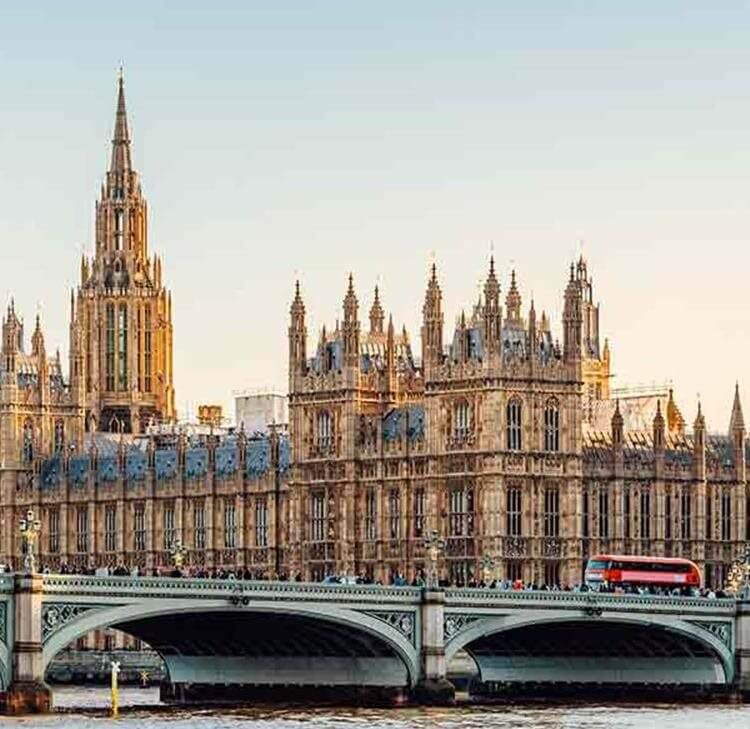The Department for Business and Trade has updated the statutory guidance which accompanies the Subsidy Control Act 2022 (SCA 2022).
The latest version of the guidance, published in August 2025, introduces several amendments which public authorities will need to be aware of.
One of the most significant changes includes the adjustment of the Subsidies and Schemes of Interest or Particular Interest (SSoPI) threshold for subsidies granted into non sensitive sectors.
Previously set at £10m, the threshold has been increased to £25m as per the Subsidy Control (Subsidies and Schemes of Interest or Particular Interest) (Amendment) Regulations 2025. This change means that the threshold above which a subsidy is considered to be a SSoPI is now significantly higher, and so fewer subsidies will require mandatory referral to the Competition and Markets’ Authority’s Subsidy Advice Unit before they can be awarded.
Although the change means that public authorities will be able to implement many large subsidies more swiftly, it will also mean that fewer subsidies are subject to additional scrutiny by the CMA, and may impact upon the quality and consistency of reviews carried out by public authorities in relation to large subsidies which fall below the SSoPI threshold.
Detailed documentation
In an effort to improve transparency and decision-making, the guidance now recommends (Chapter 2) that public authorities maintain detailed documentation of their assessments under the four-limbed subsidy test, particularly:
- in cases of ambiguity or uncertainty, or;
- where a public authority has determined that the assistance does not constitute a subsidy and is awarding the assistance in a highly competitive market with known challengers.
This is clearly good advice, and public authorities should ensure that appropriate justification, both for the decision that an intervention is or is not a subsidy, and for any assessment of compliance with the subsidy principles, is maintained.
Further guidance on market entry barriers
Chapter 3 has also been updated, to provide public authorities with further guidance on the issue of market entry barriers that may result from asymmetric or imperfect information.
This is relevant to authorities carrying out an assessment of the subsidy principles and seeking to ensure that the policy objective for their subsidy is aligned with the guidance. This additional clarity is helpful, as the concept of market failure, to which this issue is relevant, is complex and so further guidance is welcome.
However, many public authorities, particularly those without specialist economic teams, are still likely to find analysis of whether a particular situation amounts to a market failure difficult. Additionally, changes to Chapter 5 offer enhanced clarification on the prohibition of rescue and restructuring subsidies for ailing or insolvent enterprises, including a new process diagram to aid understanding.
Further guidance on entries to the transparency database
Finally, Chapter 12, which provides guidance on the duties to make entries on the transparency database, has been updated to align with the Subsidy Control (Subsidy Database Information Requirements) (Amendment) Regulations 2025. These regulations reduce the reporting requirements for in-scheme awards.
Lastly, the guidance provides additional clarity on how indirect beneficiaries should be represented on the transparency database, as outlined in Annex 1 and Annex 4.
Public authorities are encouraged to inform indirect recipients of subsidies about the value of the subsidy they receive. However, there are exceptions if notifying them would be disproportionate or if their details are already published in the subsidy award description on the transparency database or a linked website.
Developing landscape of subsidy control
This is the fourth time the guidance has been updated since its publication in November 2022, which reflects the developing nature of the regime.
As well as ensuring that they familiarise themselves with these changes and apply them when managing subsidies, public authorities should ensure that they remain alert to updates to the guidance and developments in case law.
We have recently commented recently on a flurry of subsidy control cases, including the recent judgment in Weis v Greater Manchester Combined Authority, which may have significant impacts upon subsidy control law.
Should you wish to discuss any updates with a member of our subsidy control team, please get in touch.
Contact

Angelica Hymers
Principal Associate
angelica.hymers@brownejacobson.com
+44 (0)115 976 6092
Discover more
Related expertise
You may be interested in
Opinion
Expert evidence in subsidy control challenges: Tribunal draws a firm line
Legal Update
What lessons does Weis v GMCA have for public authorities delivering regeneration projects?
Published Article
Innovative housing strategies for councils after ‘asylum hotels’ injunction
Legal Update - Public matters newsletter
Public matters: August 2025
Legal Update
Changes to the subsidy control statutory guidance August 2025: What public authorities need to know
Legal Update
Greater Manchester Combined Authority v developer: Key lessons on subsidy control for local authorities
Legal Update
Subsidy control cases coming into land
Legal Update
Government publishes response to consultation on Subsidy Control Regime
Legal Update
Refining the UK subsidy control regime consultation
Legal Update
The housing benefit subsidy deficit: Strategies for funding temporary accommodation
Published Article
The legal and planning hurdles that must be overcome to get Great British Energy generating
Legal Update
Update on local authority owned companies: Part 1 subsidy control
Legal Update
Does the subsidy control regime already need changing for the government to kickstart economic growth?
Legal Update
The transparency regime under the Subsidy Control Act - how it could be improved
Legal Update
Subsidy control guidance update - welcome guidance on 'small subsidies' introduced
Legal Update
Subsidy control: Guide to streamlined routes for universities
Legal Update
Subsidy control - lessons learned in the first year
Legal Update
Review of a subsidy control decision: The Durham Company Ltd v Durham County Council, 27 July 2023
Press Release
Browne Jacobson advising the Welsh Government on the delivery of significant number of renewable energy projects
Legal Update
Subsidy control lessons to be learnt from Bulb
Legal Update - Public matters newsletter
Public matters - February 2023
Legal Update
Government introduces first Streamlined Subsidy Schemes under new regime
Legal Update - Public matters newsletter
Public matters - January 2023
On-Demand
The Subsidy Control Act 2022. Putting the new regime into practice
Legal Update
Government provides guidance on new Subsidy Control Database and the calculation of their value
Legal Update
The impact of the new Subsidy Control regime on public regeneration projects
Legal Update
Subsidy Control Act 2022: economic queries
In July, the long-awaited statutory guidance on the Subsidy Control Act 2022 (Act) was published in draft form (Draft Guidance). A consultation on the draft guidance has recently ended and the results have not yet been published – it may therefore change before the final version is published.
Legal Update
Economic activity for the purposes of the Subsidy Control Act 2022
When carrying out a mix of activities it can be less clear if it is 'economic'. We look at the impact on local authorities & charities.
Opinion
The UK’s first domestic subsidy control case
We waited more than a year for it, but the wait is over – we finally have a domestic case on the new subsidy control regime.
On-Demand
Subsidy control webinar - 30 March 2022
In this on-demand session, Alex Kynoch and Angelica Hymers explore the practicalities of complying with the new Subsidy Control Bill, and the impact of illustrative guidance and policy statements recently published by the Government.
Published Article
The Subsidy Control Bill – Illustrative Guidance and Regulations – legal certainty vs flexibility
It has been a turbulent couple of years for those involved in subsidy control, and 2022 will be equally challenging. The Subsidy Control Bill (Bill) will take effect in 2022.
Legal Update
Subsidy control regime: new Bill working its way through Parliament
2022 is the year in which the UK’s new post-Brexit subsidy control regime will take effect. The new Subsidy Control Bill will form the backbone of the UK’s new subsidy control regime. The new Bill will replace the EU’s state aid rules, which applied until the end of the Brexit transition period.
Legal Update
New Year, New Subsidy Control Regime Part 2: Schemes, enforcement and transparency under the Subsidy Control Bill
In the first part of this article, we discussed the application of the Subsidy Control Principles. In part 2, we look at how Streamlined Subsidy Schemes will be used to grant certain subsidies more quickly, and at the enforcement and transparency provisions of the Bill.
Legal Update
New Year, New Subsidy Control Regime Part 1: The principles, restrictions and exemptions under the Subsidy Control Bill
The repeal of the State aid rules and their replacement by the regime stemming from the UK-EU Trade and Co-operation Agreement (TCA) in 2021 meant that practitioners and public bodies had to acclimatise to a new, more flexible but less certain approach.
Press Release
Browne Jacobson’s government & infrastructure lawyers advise on first South West based green hydrogen production project
Browne Jacobson’s specialist government and infrastructure team have advised Canford Renewable Energy Ltd on the delivery of its Dorset Green H2 facility.
Published Article
Subsidy control after Brexit - a practitioner's perspective
Back in late 2020, we waited expectantly for news of what the rules on state aid were going to be when the Brexit transition period ended on 31 December.
Legal Update
Consultation on new UK subsidy control regime
It is vitally important that public bodies make use of this opportunity to have their views heard and to shape the future of the new subsidy control regime.
Opinion
Consultation launched on the future of subsidy control law
The Department for Business, Energy & Industrial Strategy has just launched its consultation on the future of subsidy control law (previously known as state aid) in the UK.
Legal Update
New year, new-ish state aid rules: the new subsidy control regime
Until a formal subsidy regime is put in place funding bodies must grapple with the complex and challenging exercise of legal obligations from the UK-EU TCA and numerous trade agreements to grant funding.



























